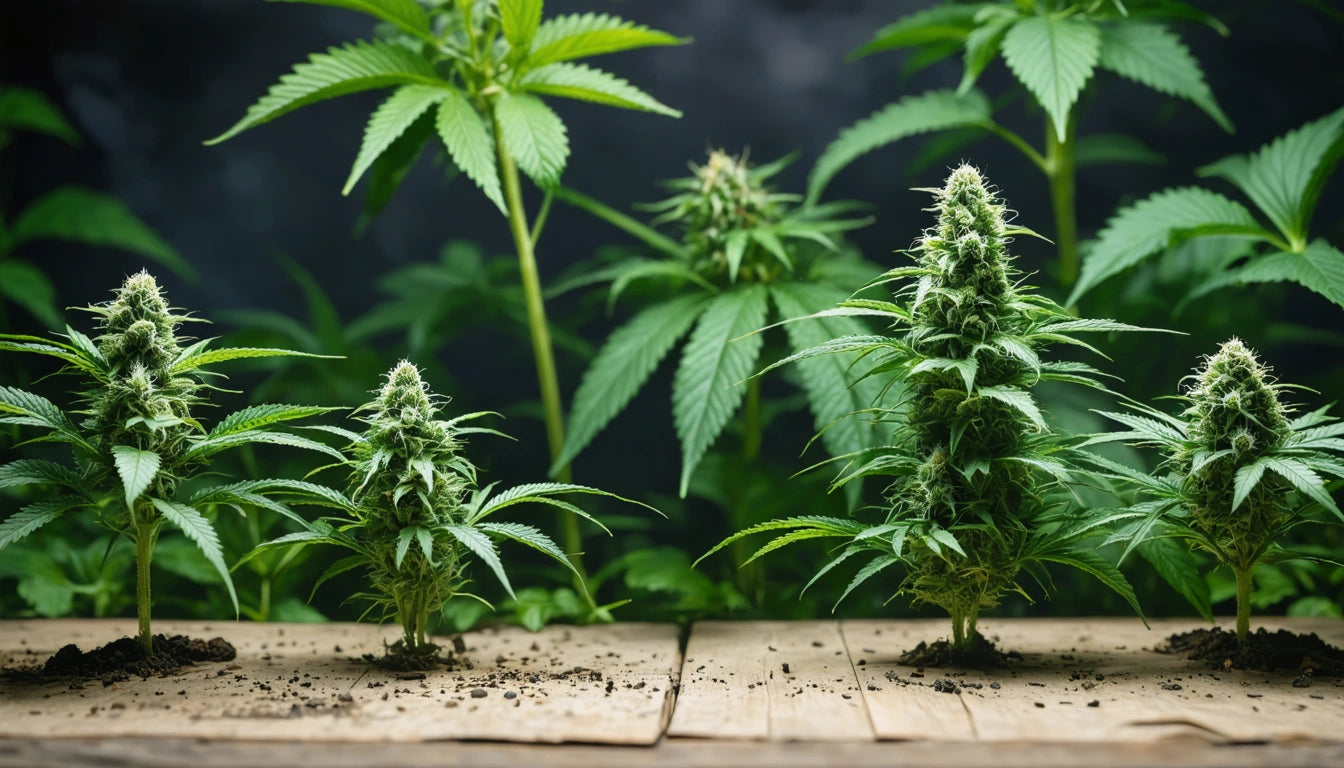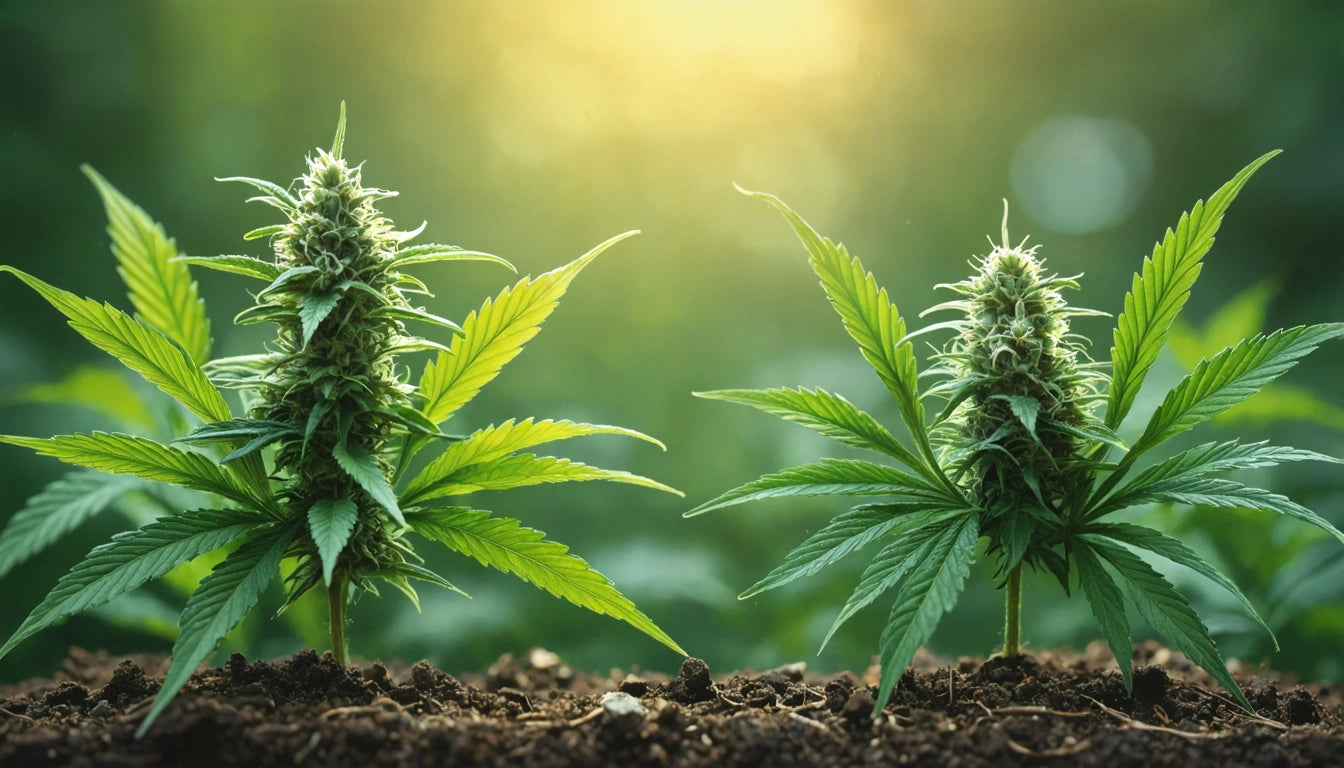Table of Contents
Understanding the Differences: Male vs Female Cannabis Plants and Their Identification
Cannabis cultivation success hinges on the ability to distinguish between male vs female cannabis plants. This fundamental skill affects everything from harvest quality to breeding programs. While female plants produce the coveted resin-rich flowers, males play crucial roles in genetics and breeding. Understanding these differences helps growers make informed decisions about their cultivation practices.
The Importance of Cannabis Plant Sex Identification
Identifying plant sex early provides significant advantages for cannabis cultivators. Female plants produce the cannabinoid-rich buds prized for consumption, while males primarily contribute pollen for breeding. Early identification allows growers to separate plants before males can pollinate females, which would result in seed production rather than maximizing flower development.
According to cannabis plant sex differentiation research, timely identification can increase harvest yields by 30-40% by preventing unwanted pollination. This knowledge becomes particularly valuable in commercial operations where efficiency and product quality directly impact profitability.
Visual Differences Between Male and Female Cannabis Plants
The most reliable way to determine cannabis plant sex is through visual inspection of specific plant structures that develop during growth cycles.
Pre-Flowering Stage Indicators
During the pre-flowering stage (typically 4-6 weeks from germination), plants begin showing their first sex indicators:
- Female pre-flowers: Appear as small, rounded calyxes with two white pistils (hair-like structures) emerging
- Male pre-flowers: Develop as small, round pollen sacs without pistils, often clustered in groups
These early signs can be subtle, sometimes requiring magnification to identify accurately. Expert identification guides recommend checking the nodes (where branches meet the main stem) as these areas typically show sex characteristics first.
Flowering Stage Differences
During flowering, sex differences become unmistakable:
- Female plants: Develop clusters of calyxes with protruding white pistils that eventually form dense, resin-covered buds
- Male plants: Produce hanging pollen sacs that eventually open to release pollen
The flowering stage makes identification straightforward even for novice growers. Visual identification resources provide clear examples of male vs female marijuanas plants pictures to assist in accurate determination.
Growth Patterns and Vegetative Differences
Beyond reproductive structures, male and female cannabis plants often exhibit different growth patterns:
- Female plants typically grow more compact and bushy with closer internodal spacing
- Male plants often grow taller, with longer internodes and fewer leaves
- Stem thickness tends to be greater in females, especially during flowering
- Root development can differ, with females sometimes showing more robust root systems
These vegetative differences can provide early hints about plant sex, though they're not as definitive as reproductive structures. Environmental factors can influence these characteristics, making them supplementary rather than primary identification methods.
Practical Applications of Sex Identification
Understanding male vs female cannabis has several practical applications:
- Sinsemilla production: Removing males ensures unfertilized female flowers maximize resin production
- Breeding programs: Selecting specific male and female plants with desirable traits for controlled pollination
- Space optimization: Early removal of unwanted males frees growing space for productive females
- Specialized cultivation: Some growers specifically cultivate males for hemp fiber or breeding stock
For commercial growers, these applications directly impact product quality and operational efficiency. Many cultivators use feminized seeds to eliminate the need for sexing plants, though understanding natural sex expression remains valuable knowledge.
Common Misconceptions About Male Cannabis Plants
Several misconceptions persist about male cannabis plants:
- Zero value: While males don't produce consumable flowers, they have uses in breeding, fiber production, and extraction
- No cannabinoids: Males do produce cannabinoids, albeit in lower concentrations than females
- Easy identification: Early sex determination can be challenging even for experienced growers
The question "can you smoke male cannabis plants?" arises frequently. While technically possible, males produce minimal flowers with significantly lower cannabinoid content, making them impractical for consumption compared to females.
When considering cannabis products for either sex, proper safety packaging requirements remain essential regardless of the plant material source, as regulatory standards focus on consumer protection rather than plant biology.
Cultivation Considerations for Plant Sex Management
Effective management of plant sex in cannabis cultivation involves several strategic approaches:
- Early detection techniques: Using magnification and focused examination of node regions
- Genetic testing: Modern DNA testing can determine plant sex before visual indicators appear
- Feminized seed use: Commercially available feminized seeds produce predominantly female plants
- Cloning: Taking cuttings from identified females guarantees female offspring
- Light cycle management: Manipulating photoperiods to delay or induce flowering for identification purposes
For cultivators seeking to manage male plants effectively, isolation protocols prevent unwanted pollination while still allowing for collection of valuable pollen or fiber.
Understanding the biological differences between male vs female marijuana plants provides cultivators with the knowledge needed to maximize production efficiency and achieve specific breeding goals. Whether producing seedless flowers for consumption or developing new genetic lines, this fundamental knowledge forms the foundation of successful cannabis cultivation.











Leave a comment
All comments are moderated before being published.
This site is protected by hCaptcha and the hCaptcha Privacy Policy and Terms of Service apply.